Good news is scarce in Puerto Rico these days. But if you look 13 miles to the west, on a 358-acre island called Desecheo, you’ll find a mother lode.
Desecheo, once the Caribbean’s most important brown booby breeding habitat, was made a national wildlife refuge in 1976. This was something of a futile gesture because invasive aliens — black rats, feral goats and macaque monkeys — had extirpated the brown boobies (which once numbered around 10,000) along with the seven other nesting sea-bird species. The invasive species also blighted forests and the federally threatened Higo Chumbo cactus, and reduced native land birds, reptiles and invertebrates to a shadow of their former abundance.
Desecheo was an ecological wasteland.
In 1976 there was virtually nothing the U.S. Fish and Wildlife Service could do about that. But in 1994 it acquired a powerful ally with the founding of Island Conservation (IC), a nonprofit team of biologists dedicated to preventing extinctions around the globe. There was and is no shortage of work. Although islands comprise a miniscule fraction of Earth’s landmass they harbor about half of all endangered species. At least 80 percent of the 245 recorded animal extinctions since 1500 have occurred on islands.
IC and multiple partners (frequently The Nature Conservancy) have thus far removed invasive mammals from 59 islands thereby benefitting 1,090 populations of 402 native species and subspecies. Research just released by IC, Birdlife International, the International Union for Conservation of Nature, and the University of California at Santa Cruz demonstrates that 41 percent of the planet’s vertebrates threatened with extinction can be saved by ridding certain islands of invasive mammals.
Last July, after an exhausting, expensive ten-year battle, IC and its partners certified that Desecheo National Wildlife Refuge was free of macaques (if you don’t count a single, aging female) and rats. The last feral goat was removed in 2009.
Such successes were impossible before the advent of recent technology including: the anticoagulant rodenticide brodifacoum, sufficiently fast acting to kill rats before they learn to avoid it; thermal imaging which allows partners to detect alien mammals at night and in forest canopies; GIS (Geographic Information System) for recording precise positions on Earth’s surface so that rodenticide-laced bait can be applied to every part of an island; and satellite imaging to determine when islands lose greenery so eradications can happen when less food is available to aliens.
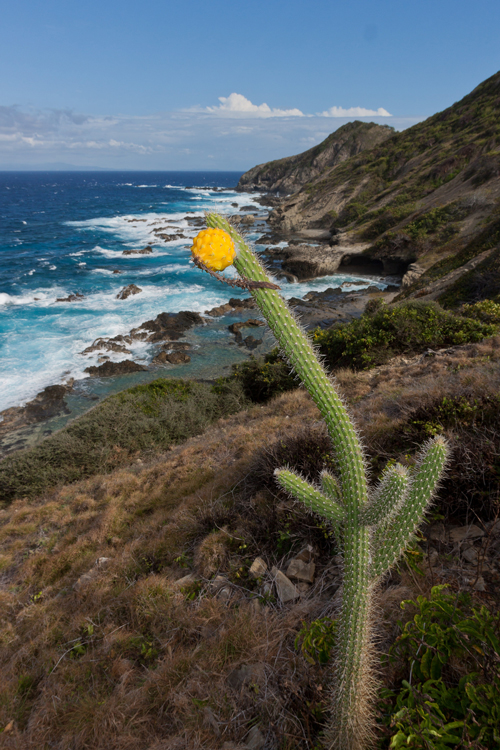
Even with goats (introduced in 1788) and rats (introduced circa 1900) a few sea birds hung on. What finally did them in were the macaques, unleashed in 1966 for medical research by the then clueless National Institutes of Health.
Ecological Illiteracy Leads to Ecological Wastelands
The most formidable obstacle confronting IC and partners is ecological illiteracy. They get savaged by chemophobes who fear and loathe all poisons in all situations and by animal-rights types who defend alien wildlife, rats included, and decry the often unavoidable, increasingly minor and always inconsequential bykill of non-target wildlife.
The Desecheo project, however, proceeded unopposed. It wasn’t as if Puerto Ricans are more enlightened than other Americans. It’s just that they live in an alien-infested hell of macaques that tear up their gardens and bite them, exposing them to the herpes B virus (relatively harmless to macaques but usually fatal to humans), feral hogs and feral goats which also tear up their gardens, feral cats which infect them and wildlife with toxoplasmosis, and a biblical plague of rats and house mice.
Public reaction was different at Channel Islands National Park off southern California. When IC and partners set about saving and restoring a host of native species including the endangered ashy storm-petrel, imperiled Scripps’s murrelet, Cassin’s Auklet and Anacapa deer mouse by eradicating black rats, they were delayed by litigation. Typical commentary in the local press included: “Species go extinct all the time” and “Who are humans to call other species invasive?” Park rangers were obliged to wear bulletproof vests; and shortly before the first bait application, two men landed on Anacapa Island in an inflatable boat and started flinging pellets of vitamin K — brodifacoum’s antidote.
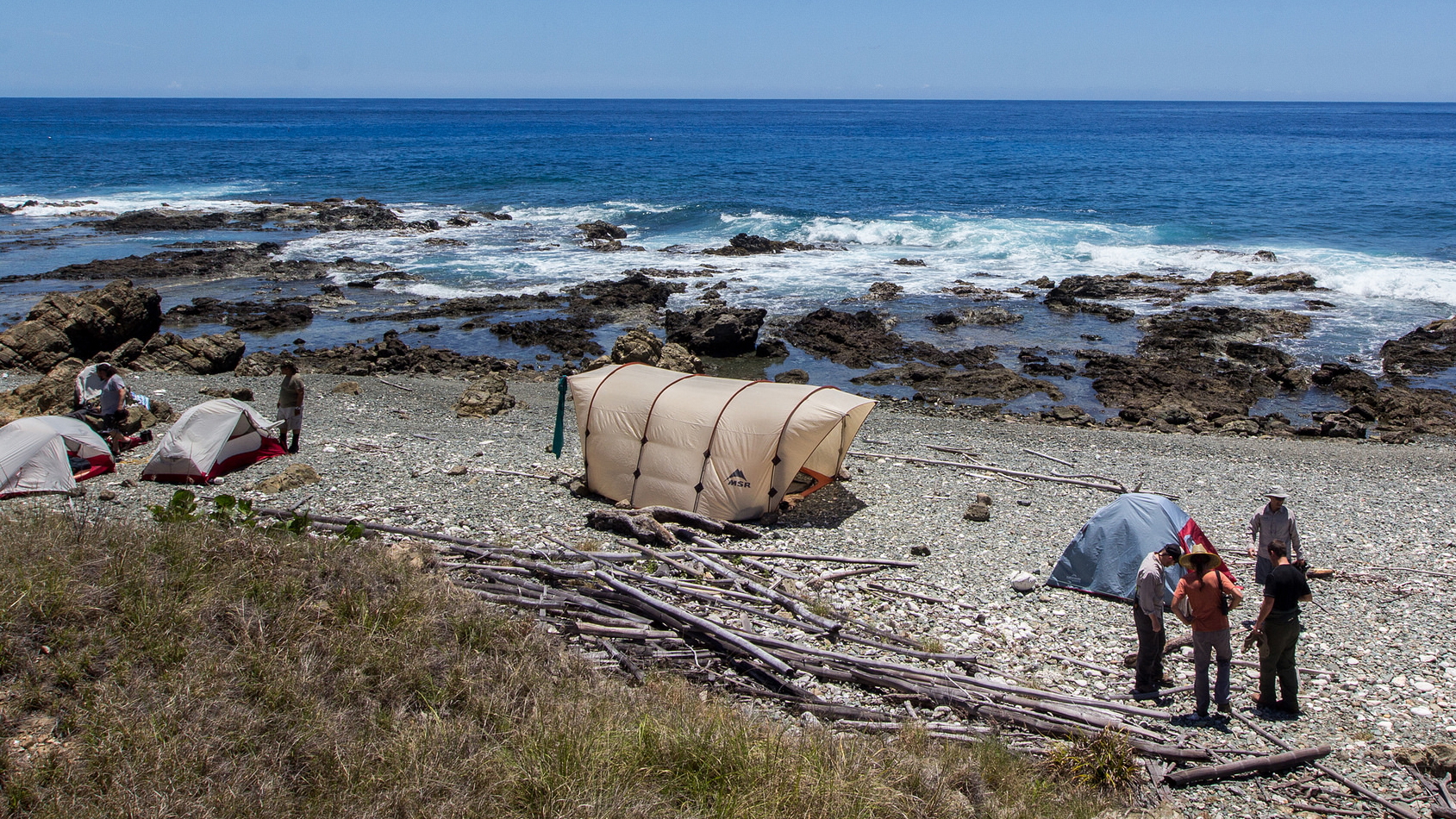
Had Anacapa been infested with macaques, recovery would have been a political impossibility.
Prudently, IC doesn’t talk it up about how it, the USDA’s Wildlife Services and a nonprofit group called White Buffalo removed macaques from Desecheo. But it’s important for the public to understand just how difficult and heroic was this effort, a first in island recovery. Learning as they worked, the partners first tried baiting and trapping. It failed. They had better results with rifles but had to bring in thermal-imaging equipment when the macaques retreated to the forest canopy.
“It was a hell hole,” recalls White Buffalo’s president, Dr. Anthony DeNicola. “Ninety or 100 degrees with no place to get out of the sun.”
IC and White Buffalo staffers would sit for 14 hours a day, scanning trees and terrain with binoculars. Toward the end it would take them a month to take out one or two monkeys. Finally they had to bring in tagged, sterilized “Judas animals” from Puerto Rico to socialize with the few remaining wild ones and reveal their presence. It took five years to finish the job.
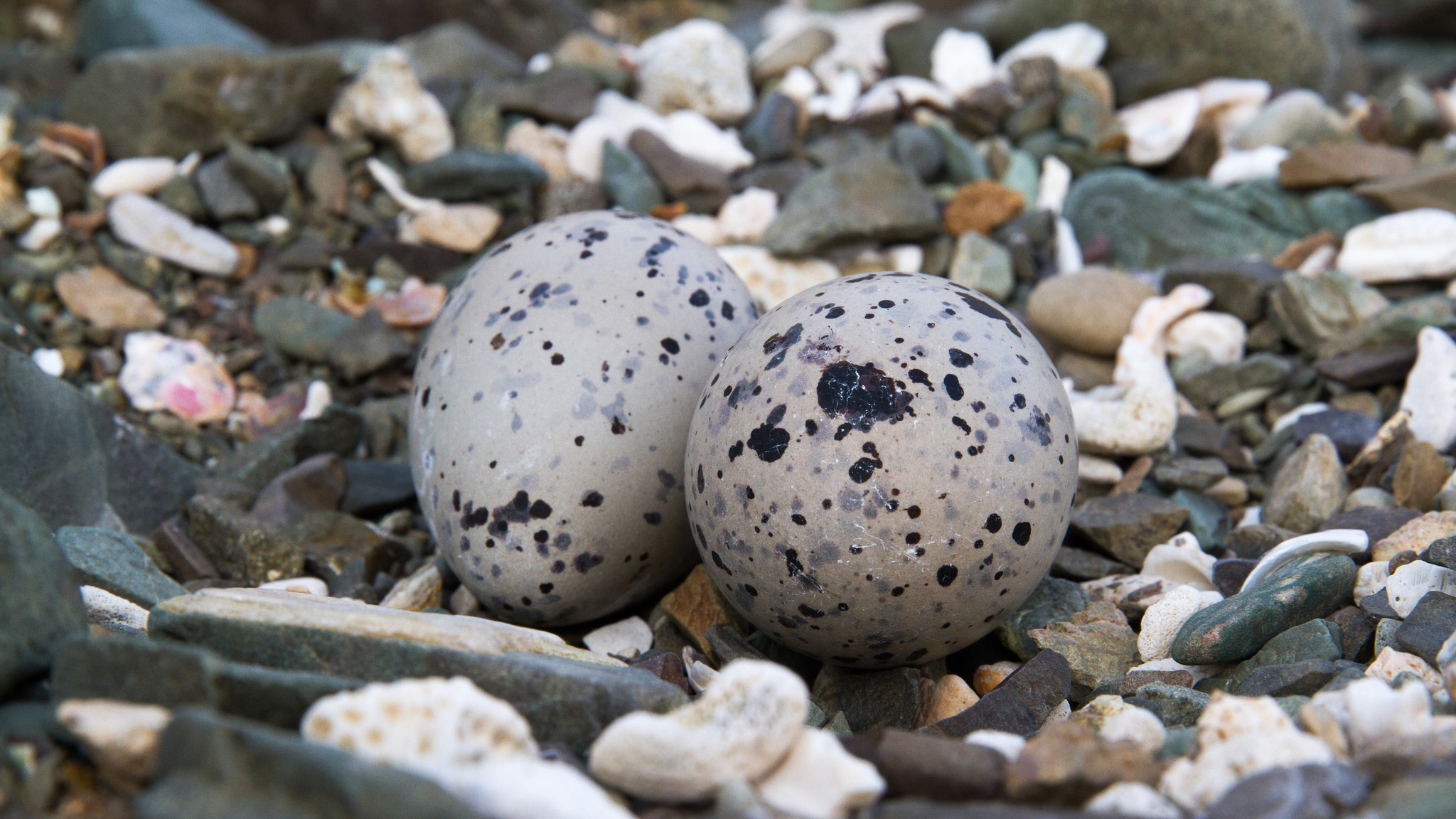
Safe for Birds Again
The reluctance of IC to offer such details in its press releases and interviews doesn’t mean it tries to fly under the radar. “That would be inconsistent with our values,” remarks Heath Packard, IC’s director of government and public relations. It would also be illegal under the National Environmental Policy Act, which requires IC and its federal partners to engage with the public, disclosing alternatives and their various consequences.
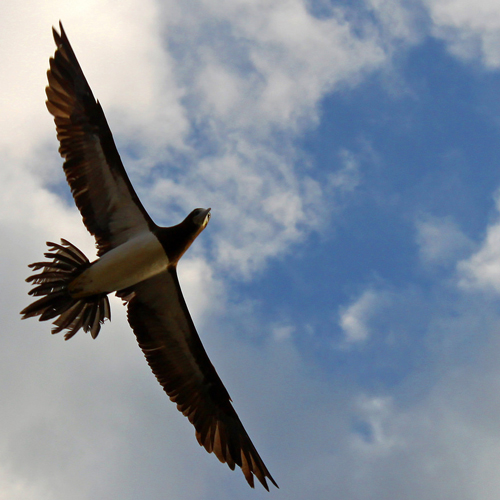
“The outreach is always the same,” says IC’s global affairs director, Gregg Howald. “It’s just that results of that outreach vary widely from location to location.”
Citing the Polynesian rat eradication on Lehua Island off Hawaii, completed September 13, Howald offers this: “For years we’d been reaching out to the community with blog postings, talking with people and holding public meetings. It wasn’t until late July that a few vocal individuals realized this was really going to happen and started trying to stop it, making lots of noise and drawing media attention. It was just off the rails. We had a public meeting in which people yelled at us for over two hours. It was horrible. Despite all our outreach, we wound up with a confrontation that started a cascade of anti-project misinformation.”
For example, the Huffington Post ran an op-ed by one Maggie Sergio (whom it identified as a “writer, conservationist and concerned citizen of the planet”) suggesting that five pilot whales, which later beached themselves on Kauai and died (as they commonly do everywhere they exist) were victims of diphacinone — an impossibility. Sergio also claimed that “three aerial poison drops, totaling 11.5 tons of diphacinone” were delivered by helicopter. There isn’t enough diphacinone in the world to drop 11.5 tons. What was dropped was 8.5 tons of bait of which .005 percent was diphacinone. This and other misinformation was recycled by local media.
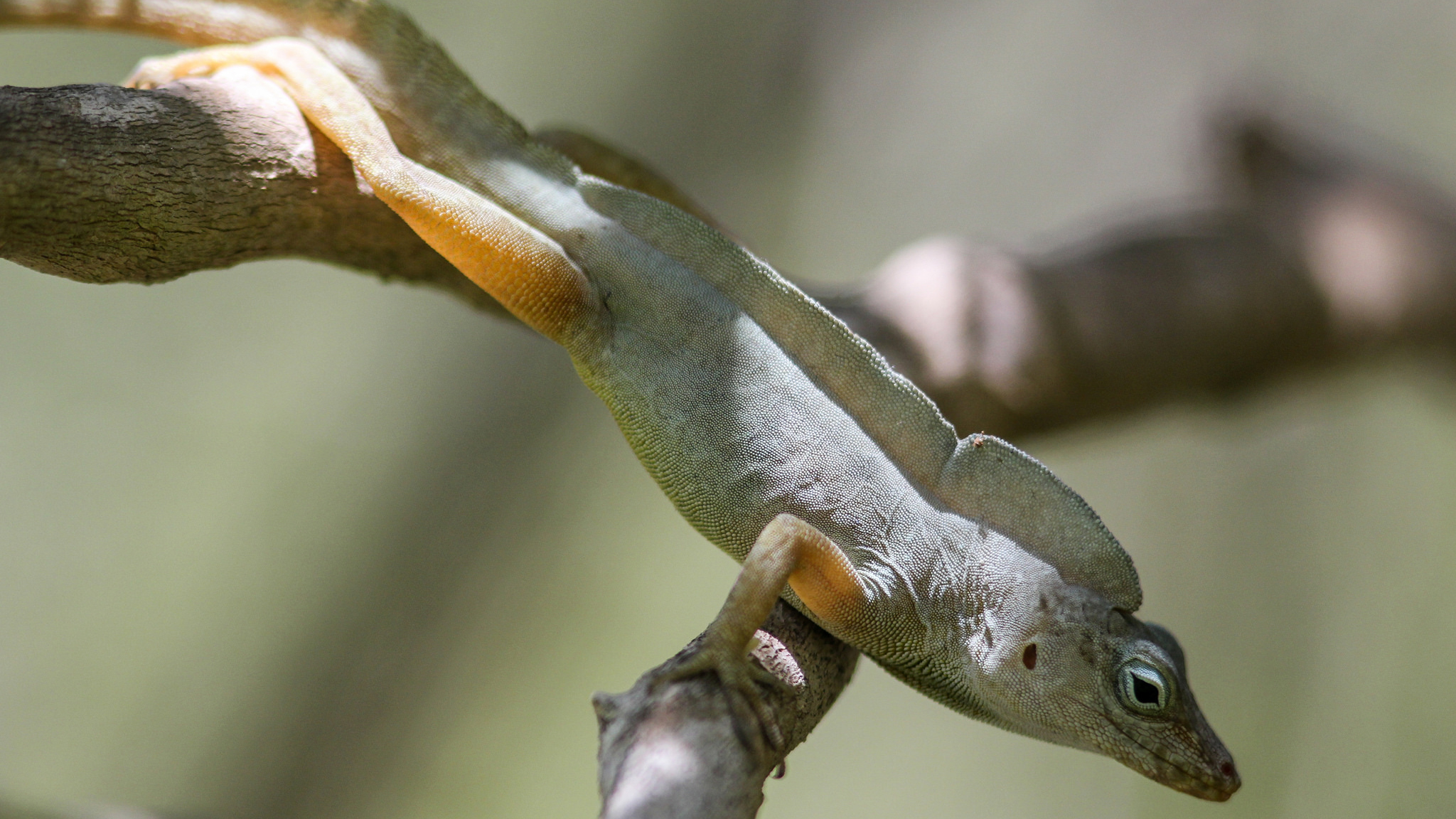
It was exactly this sort of fear mongering that motivated the partners to use diphacinone, less toxic and therefore less effective than brodifacoum. But apparently it worked. “So far so good,” says Howald. All the rats we collared and monitored died. It will take time to tell for sure [if the project succeeded]. We did state in our environmental assessment that if diphacinone failed, we could come back in with brodifacoum.”
Either way Lehua Island will again be safe for federally threatened Newell’s shearwaters, band-rumped storm-petrels now a candidate for Endangered Species Act protection, wedge-tailed shearwaters, brown boobies, red-footed boobies, Laysan albatrosses, black-footed albatrosses, Christmas shearwaters, Bulwer’s petrels, red-tailed tropicbirds and black noddies.
Spectacular Results
Recovery of Desecheo’s native ecosystem is just beginning, but already results are spectacular. Despite insect surveys beginning in 1914 dingy purplewing butterflies had never been observed on the island. In April their caterpillars were so abundant they defoliated Almacigo trees. (Leaves quickly regenerated.)
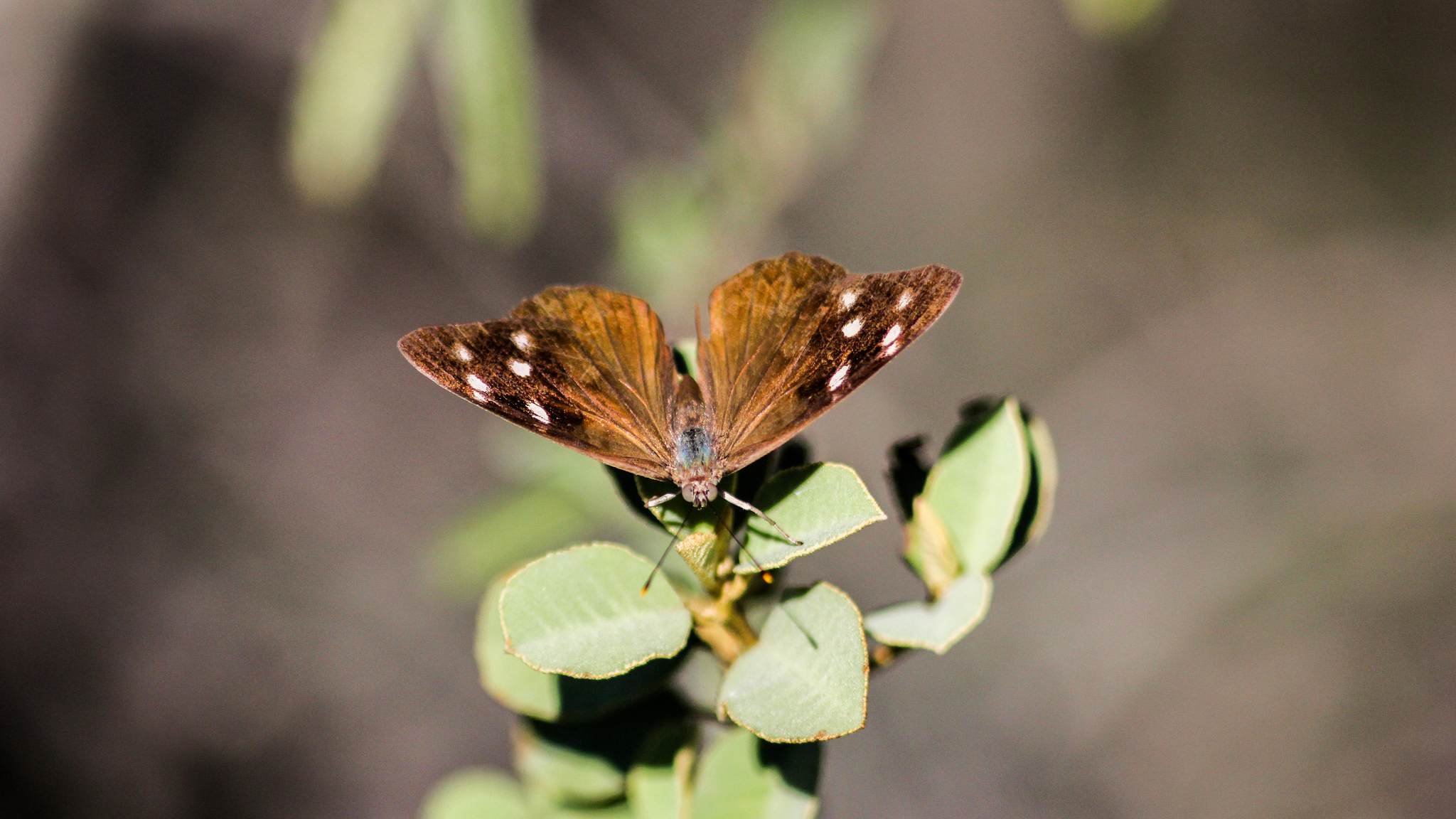
Endemic reptiles are doing much better, particularly Desecheo anoles, Desecheo ameivas and Puerto Rican racer snakes. A Puerto Rican skink, a species rarely observed in the past, has been sighted. Invertebrate density has increased. Native fruit trees and flowers are suddenly flourishing. New leaves, preferred by goats, rats and macaques, are more abundant than in anyone’s memory. Higo Chumbo cacti are rapidly recovering; and forests, particularly understories, appear to be growing faster.
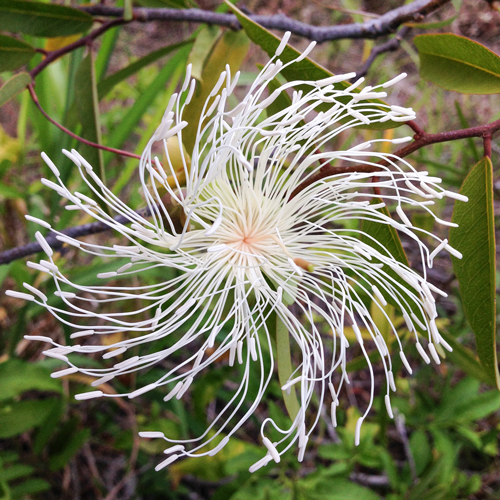
At this writing no one has visited the island since the hurricanes, but there are no refuge buildings on Desecheo; and in the tropics vegetation bounces back quickly. As of mid-October there were new leaves and blooms on Puerto Rico.
In its island-hoping war against introduced aliens IC builds on each victory. “One thing I’ve learned is that you can get so focused on individual projects you start to lose sight of the forest for the trees,” remarks Howald. “Now that we’ve had this success what does it mean? What’s the potential of Desecheo; what’s the leverage?”
The potential and leverage, he explains, is demonstration to regulatory agencies, the funding community and, especially, the public: that the choice is salvation of nearly half the world’s endangered species or the continued presence of alien invasives; that we can’t have both; that if we want the former, we have to take out the latter; and that we can do that without risk to humans or native wildlife populations.

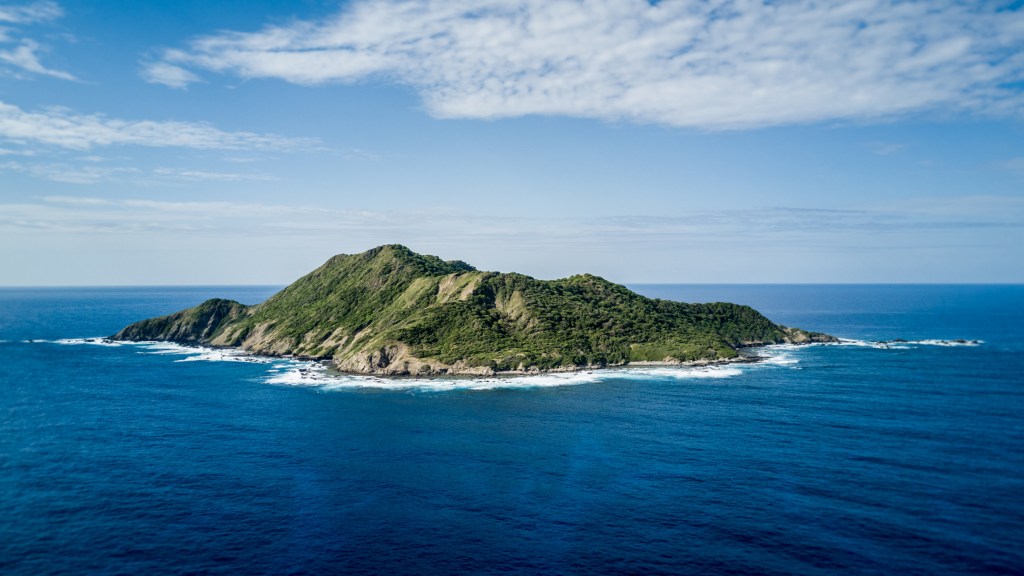



Thanks for the great reporting out and the tedious work you have carried out.
I think that all the rat lover’s generally don’t have rats where they live. PETA recently had a field day when the city of Green Bay WI distributed poison bait in a rat infested neighborhood. Apparently they have forgotten about the plague.
Exactly how were the macaques and goats “removed?” Killed or removed? And who introduced these animals to the island in the first place? It is not the fault of any animal that other animals or plants don’t thrive in their presence (the way it *is* the fault of humans that so many species can no longer thrive amidst their housing developments). What this article is missing is the story of how the animals were placed there to begin with. And just who is it who can morally decide that three species should be “eradicated” so other species can live?
Island ecosystems, which are the most vulnerable to damage and destruction by introduced exotics, also because of their isolation from adjacent land masses, offer greatest opportunity for restoration.
The article does in fact state that the monkeys were a misguided and ecologically ignorant introduction by the National Institutes of Health. Goats were introduced from sailing ships in the 1700’s and rats probably escaped from sailing vessels and other ships.
What a wake up call! I admit I would have been among those screaming against poisons just on face value of the Word. Yet another proof that We must keep shut and Listen to the scientists who study, experiment and follow up for results. I was raised on the beach in Southern California and remember the kerfluffle over goats on one of the offshore islands. I remember thinking, well, I like goats. I wonder why they can’t be out on an island. Happily, all I did was wonder then just got on with my young adult life.
Thank you to all the hard working, deep thinking scientists who Really study a situation before taking action.
God Bless You for this wonderful work.
Sometimes when we humans have really messed things up (which is frequently) we need to take a look at what we have done and work to repair the damage we have caused. Thank goodness we have people who have the knowledge, the caring and courage to do so. We need more people to deeply care about this earth and all it’s creatures.
Thank you for you work.
What a great article with excellent facts. It makes one hope for a better world with correct research man can undo all harm they created.
Ted Williams might detest baseball,however,this article was a ‘Hit out of the Park!’ nice to read how they cleared all the bases.
What a great success story!! Now I can really see the kind of progress that make my donations worthwhile. Thank you for the update and I wish you continued successes! I love sea birds and to know that they are once again safe on this island is wonderful. Did the project take longer than 5 years? Thanks for your hard work eradicating the invasive species. Well done.
Sincerely, Nancy Mastropaolo
I would like to thank all the hard working people trying to fix the problems we as humans create, the answer is not “let nature take its course ” when we are the cause of imbalance. We need to take responsibility for our mistakes and give the environment a fighting chance!
Great story! Too bad the bigger fight is with the chemophobes than with the rats. Nice to see that a few hardy native species hung on and can now flourish. Hope the hurricanes didn’t hurt the native animals too badly.
it is disheartening to keep seeing my fellow conservationists continually focusing on the trees instead of the forest. Misguidedly, they’ve objected to restoring native trout to areas infiltrated non natives, interfered with the removal on non native horses adversely affecting the habitat for native species, and now this. Because of our meddling, we have infested our country with an abundance of non native species that out compete our native flora and fauna. These invasive species wreak havoc on the ecosystem and adversely affect our native wildlife and plants that have been with us for millions of years. Like it or not, we are going to have to take extreme measures if we are going to be able to keep some semblance of our native fish and wildlife for future generations to enjoy.
Good well-written story, and definitely an upper during a year when uppers are badly needed. Thank you, Ted Williams!
The only discouraging sections were the reminders that California and Hawaii are often hotbeds of never-kill-any-invasives ecological stupidity. (In my mind, after a certain point, willful determined ignorance becomes a kind of stupidity.)
In the Cornbelt where I reside, ecological illiteracy is abundant , alas, but it usually takes different forms. I did once talk with a local woman who told me that she would rather see native orchids completely disappear from our state (a process which unfortunately is already underway) than ever see a single deer killed by a human.
Fortunately, she is far outnumbered here. I can’t imagine what it would be like to have to deal with her point of view frequently.
Thank you to all you dedicated conservationists across the country who somehow manage to retain your sanity and keep going when constantly dealing with people who believe that invasive exotics should be allowed to flourish and native species should just go extinct. Thank you for working on behalf of enlightenment and our grandchildren to help the natives.
Thank you for this remarkable recovery story, Mr. Williams, your lack of baseball expertise notwithstanding. May your tribe increase. Nature is wonderfully resilient when given half a chance.
Great article. If you think all lethal wildlife management should be prevented, remember that by doing nothing (or creating road blocks) you facilitate the ultimate death…..the removal of an entire species from the planet. That is on your head. Death is all around us. We raise and kill birds and mammals to feed us, we kill countless numbers of invertebrates to plant the crops that omnivores and vegans alike enjoy. The deaths of members of super abundant exotic species is sometimes essential to the restoration of species who are disappearing. To single out the removal of exotics as the issue you are passionate about is misplaced passion. Island restoration is indeed something to be passionate about. Island restoration brings back species on the brink of disappearance. Kudos to all the parties involved. Keep up the good work.